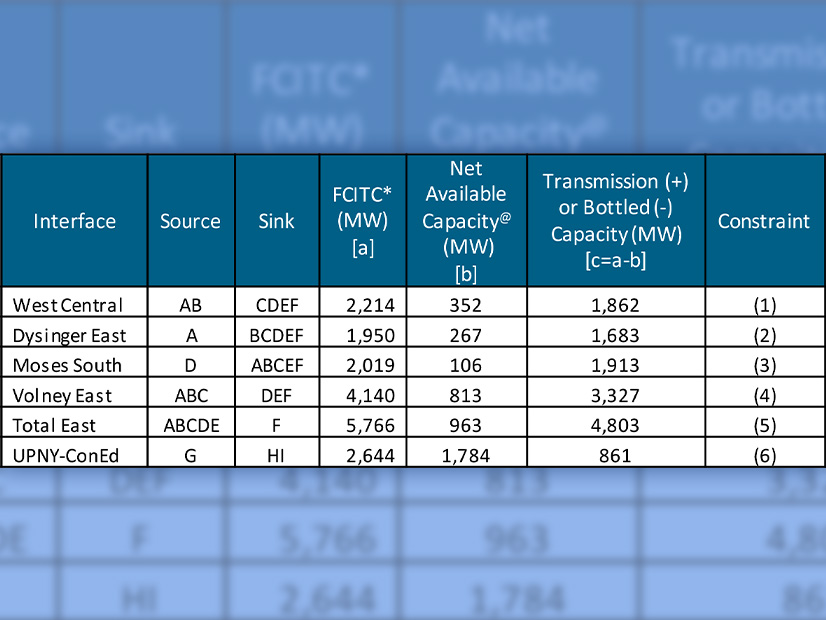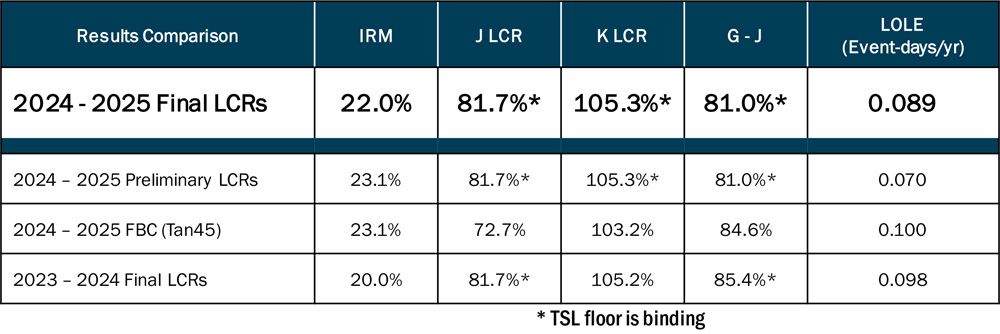NYISO will not need to create any new capacity zones to ensure grid reliability over the next four years, the grid operator told stakeholders Jan. 9.
That was the conclusion of NYISO’s quadrennial new capacity zone (NCZ) study, the results of which the ISO presented to a meeting of the Installed Capacity/Market Issues working groups (ICAP/MIWG). The study found that none of New York’s six “highway interfaces” — the transmission links between capacity zones — are constrained, eliminating the need to establish an NCZ.
The NCZ study’s deliverability tests assess whether each highway interface can accommodate additional power flows and has an “additional transmission capacity” (or deliverability “headroom”) or cannot support more power and has “bottled generation capacity” (a deliverability “constraint”). The results showed, however, that each interface has additional transmission capacity, negating the need for new zones. The finding aligns with the 2019/20 NCZ study, which also identified no constraints.
NYISO performs the NCZ study in conjunction with its demand curve reset (DCR), another quadrennial process to review and adjust the demand curves in its capacity market to ensure they accurately reflect the current costs and market conditions for providing reliable electric service in New York.
NYISO must share the NCZ study with its Market Monitoring Unit for review and commentary and submit the study’s results to FERC as an informational filing by March 31.
Final LCR Results
At the ICAP/MIWG meeting, NYISO also presented the final locational minimum installed capacity requirements (LCR) for the 2024/25 capability year, which were based on the 22% installed reserve margin (IRM) approved by the New York State Reliability Council’s Executive Committee (NYSRC EC) late last year. (See NY Reliability Council Approves 22% IRM for 2024/25.)
The IRM determines the additional amount of capacity New York load-serving entities must maintain as a precaution against unexpected outages or demand surges.
Stakeholders raised questions about future discussions on transmission security limits (TSLs) and the assumptions contained within them, highlighting their growing relevance in LCR determination. TSLs define the maximum power capacity that can be safely transferred over the transmission network in a particular area, directly influencing the LCR and IRM by indicating the minimum generation required to maintain grid reliability within transmission constraints.
NYISO staff confirmed it is engaged in ongoing discussions with the NYSRC and its subcommittees to refine TSLs and their assumptions and indicated those talks are expected to continue throughout 2024.
The ISO intends to seek stakeholder approval for the final LCR results at the Jan. 18 Operating Committee meeting.
Capacity Accreditation
NYISO staff also told ICAP/MIWG meeting attendees that the second set of informational capacity accreditation factors (CAFs), derived from the base case that produced a 23.1% IRM, will soon be published online.
The IRM was derived from a technical study produced by both NYISO and the NYSRC’s Installed Capacity Subcommittee, which concluded that, under base conditions, a 23.1% IRM would satisfy the resource adequacy criteria without violating a loss-of-load expectation of no more than 0.1 event-days/year in the next capability year.
The ISO said this second set of materials will include emergency assistance updates not captured in the first set of CAFs and must be posted by March 1.


